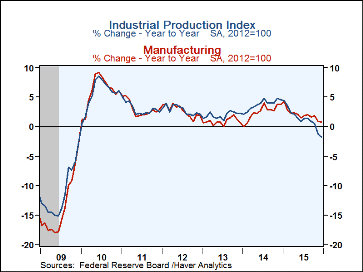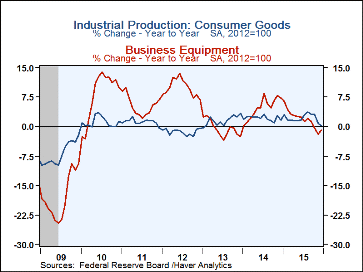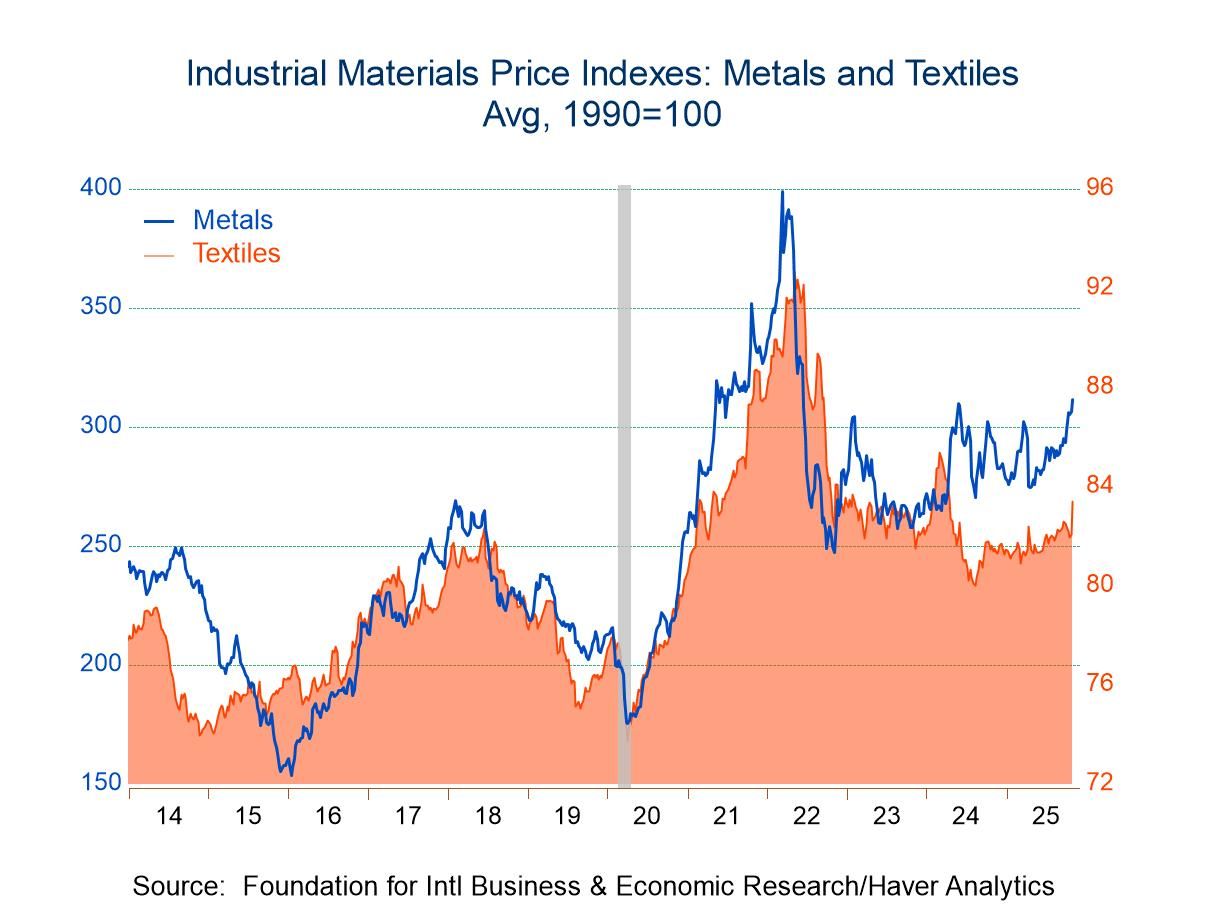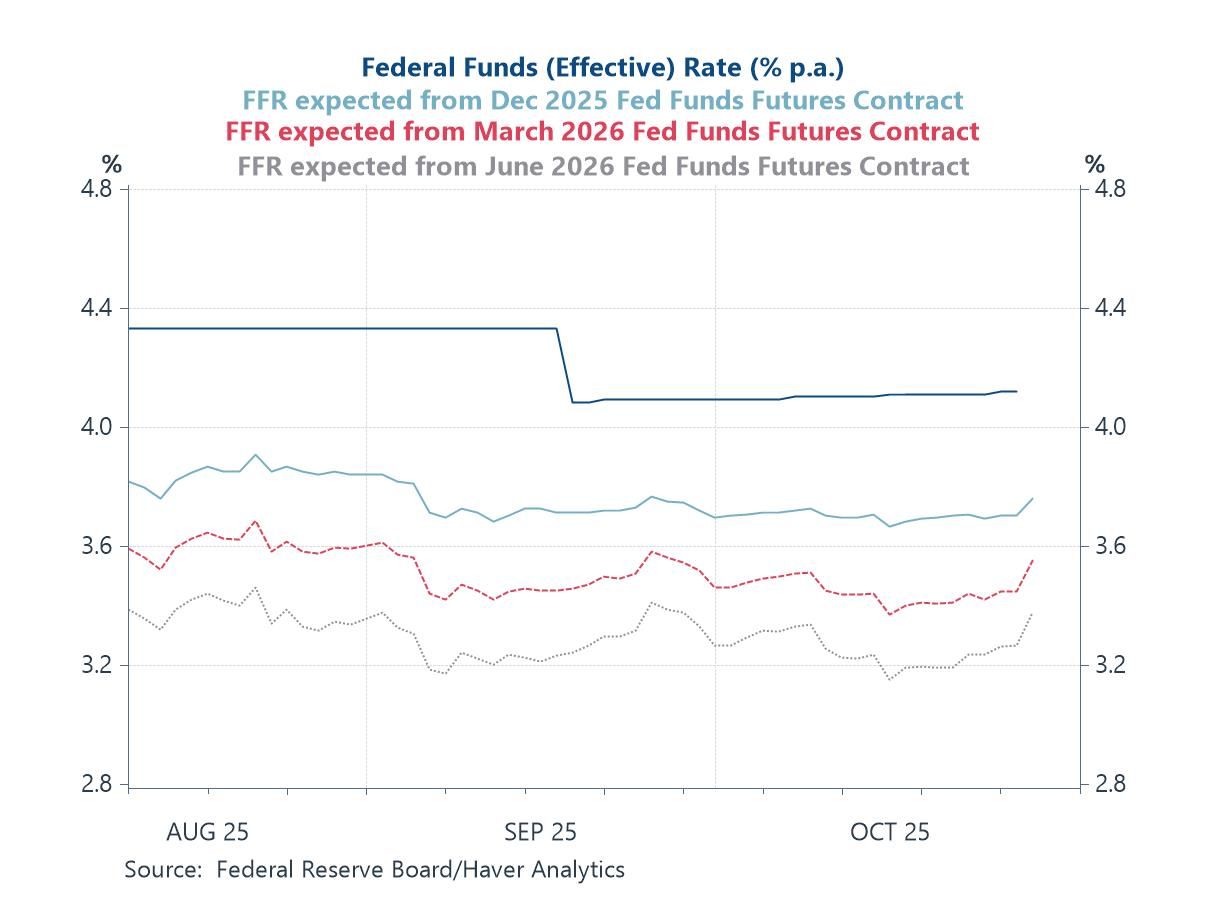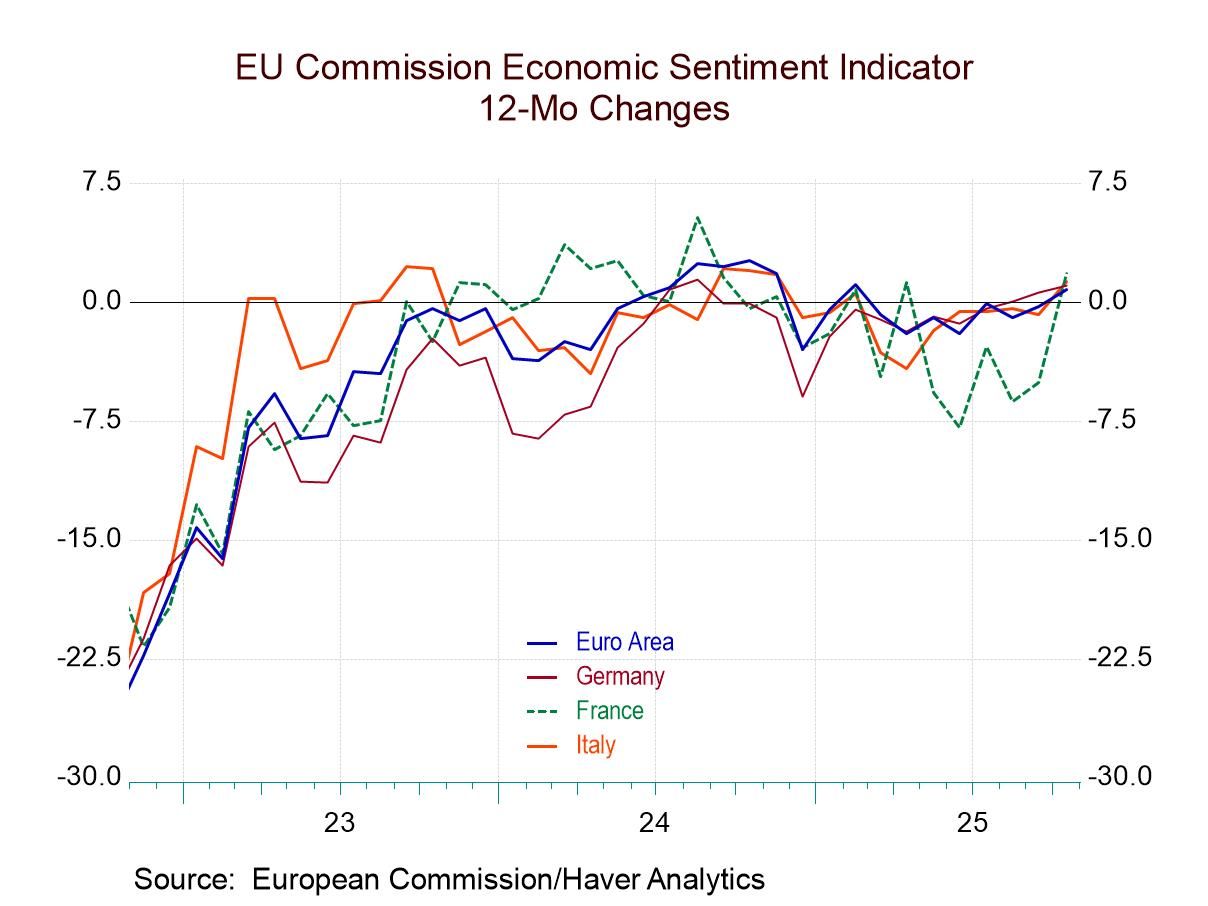 Global| Jan 15 2016
Global| Jan 15 2016U.S. Industrial Production Declines for the Third Straight Month
by:Tom Moeller
|in:Economy in Brief
Summary
Overall industrial output declined 0.4% during December following a 0.9% November fall, revised from -0.6%. It was the third consecutive monthly decline and lessened the 2015 increase to 1.3%, its weakest rise in six years. The Action [...]
Overall industrial output declined 0.4% during December following a 0.9% November fall, revised from -0.6%. It was the third consecutive monthly decline and lessened the 2015 increase to 1.3%, its weakest rise in six years. The Action Economics Forecast Survey expected a 0.3% fall.
A 2.0% decline (-7.6% y/y) in utility output accounted for most of last month's shortfall in production. Mining output also eased 0.8% (-11.3% y/y), down for the fourth straight month.
Manufacturing sector production fell 0.1% (+0.8% y/y) for the fourth month in the last five. The 2.0% full year increase was the weakest rise since 2013. Consumer products output fell 0.8% (+0.3% y/y), pulled down by a 1.7% drop (+3.7% y/y) in motor vehicle production. Furniture production fell 0.9% (+1.7% y/y) and machinery production declined 0.5% (-3.0% y/y). In the nondurable goods sector, chemical output was off 0.5% (+1.2% y/y) and apparel production declined 0.3% (-7.0% y/y). Materials production eased 0.3% (-3.1% y/y).
In the special aggregate series, output of high technology products gained 1.4% (1.7% y/y). Output of computers increased 3.0% (8.1% y/y) and bounced back after November's drop. Communications equipment production increased 0.1% (-6.4% y/y) for the second straight month. Overall production excluding the transportation & high technology sectors fell 0.4% (-2.2% y/y), off for the fourth consecutive month. Factory output excluding autos & high tech was unchanged for a second month (+0.5% y/y).
Capacity utilization fell to 76.5%, the lowest rate since July 2013. In the factory sector, the capacity utilization rate eased to 76.0%, the lowest level in six months. Overall industry capacity rose 1.5% y/y while in factory sector it gained (1.2% y/y).
Industrial production and capacity data are included in Haver's USECON database, with additional detail in the IP database. The expectations figure is in the AS1REPNA database.
| Industrial Production (SA, % Change) | Dec | Nov | Oct | Dec Y/Y | 2015 | 2014 | 2013 |
|---|---|---|---|---|---|---|---|
| Total Output | -0.4 | -0.9 | -0.2 | -1.8 | 1.3 | 3.7 | 1.9 |
| Manufacturing | -0.1 | -0.1 | 0.4 | 0.8 | 2.0 | 2.5 | 0.9 |
| Consumer Goods | -0.8 | -0.6 | -0.2 | 0.3 | 2.1 | 2.2 | 1.5 |
| Business Equipment | 0.1 | -1.0 | -0.4 | -0.8 | 1.9 | 4.8 | -0.4 |
| Construction Supplies | 0.6 | 0.0 | 2.2 | 1.6 | 2.7 | 3.9 | 2.8 |
| Materials | -0.3 | -1.2 | -0.5 | -3.1 | 1.4 | 5.1 | 3.1 |
| Utilities | -2.0 | -5.0 | -1.8 | -7.6 | -1.7 | 1.0 | 2.5 |
| Capacity Utilization (%) | 76.5 | 76.9 | 77.7 | 79.0 | 77.8 | 78.1 | 76.7 |
| Manufacturing | 76.0 | 76.1 | 76.3 | 76.3 | 76.1 | 75.3 | 74.0 |
Tom Moeller
AuthorMore in Author Profile »Prior to joining Haver Analytics in 2000, Mr. Moeller worked as the Economist at Chancellor Capital Management from 1985 to 1999. There, he developed comprehensive economic forecasts and interpreted economic data for equity and fixed income portfolio managers. Also at Chancellor, Mr. Moeller worked as an equity analyst and was responsible for researching and rating companies in the economically sensitive automobile and housing industries for investment in Chancellor’s equity portfolio. Prior to joining Chancellor, Mr. Moeller was an Economist at Citibank from 1979 to 1984. He also analyzed pricing behavior in the metals industry for the Council on Wage and Price Stability in Washington, D.C. In 1999, Mr. Moeller received the award for most accurate forecast from the Forecasters' Club of New York. From 1990 to 1992 he was President of the New York Association for Business Economists. Mr. Moeller earned an M.B.A. in Finance from Fordham University, where he graduated in 1987. He holds a Bachelor of Arts in Economics from George Washington University.


